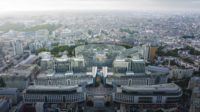Though most of the American public is no doubt unaware of the change, the inhabitants of London, The Hague, and Oslo—to name cities in just three countries concerned—cannot have failed to notice a major shift in U.S. foreign policy. Since the early 2010s, as conservation architect Jorge Otero-Pailos explained in his 2014 essay, “Public Architecture After America’s Withdrawal: On the Preservation of U.S. Embassies,” the federal government has been “quietly selling off” its valuable city-center chanceries—many of them fine examples of postwar Modernism—“to the highest bidder, and using the money to build new, larger, and more heavily protected structures” in outer locations. With this post-9/11 security imperative in mind, the U.S. embassy in Britain has been moved from Mayfair to Nine Elms, that in the Netherlands from The Hague to the neighboring town of Wassenaar, and Norway’s from Henrik Ibsens Gate, opposite the royal palace, to the suburb of Makrellbekken. After the sell-off, there remains the question of what happens to these decommissioned edifices, “a fate that varies a lot depending on the host country—some are simply demolished, others preserved to a greater or lesser degree,” says Otero-Pailos, whose expertise saw him join the team of architects that last December completed the conversion of the Oslo chancery into a mixed-use complex for property-developer Fredensborg.
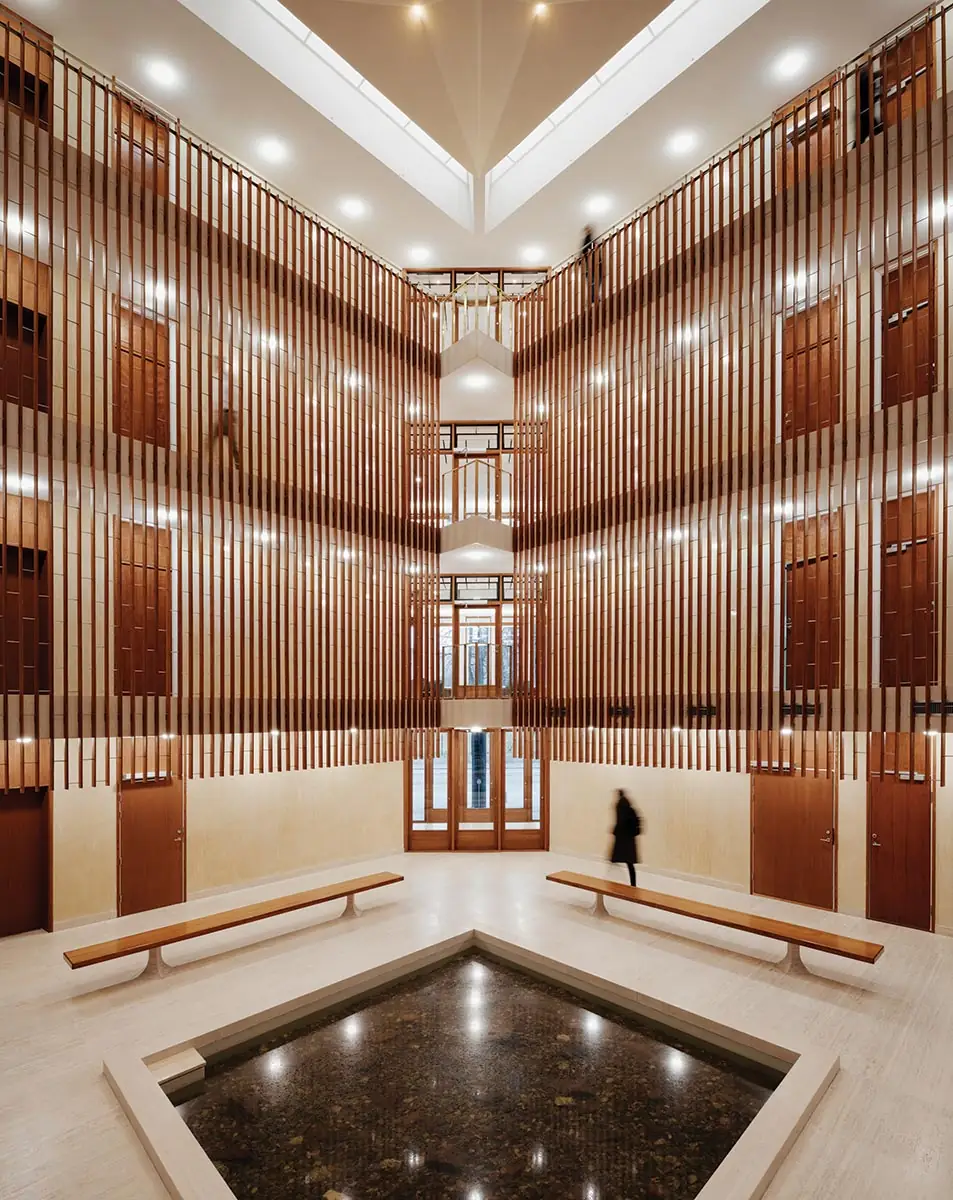
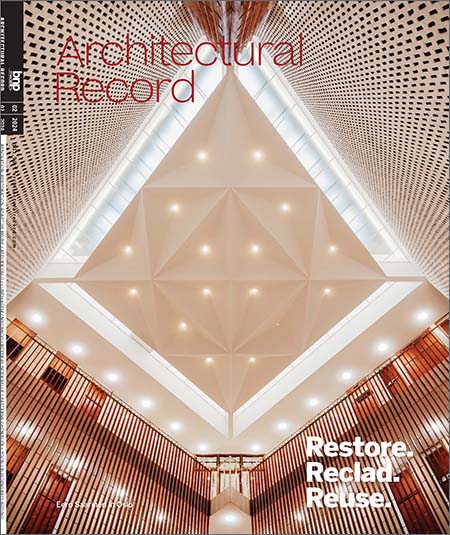
Ambassaden’s canopied entrance (top of page) leads to a rhombus-shaped atrium (above). Photo © Einar Aslaksen, click to enlarge.
From 1948 onward, as the Cold War grew ever chillier, architecture took on an important diplomatic role for the U.S., which began a program of embassy building that sought to seduce public opinion in allied countries that had joined the fight against communism. Little chunks of America, these chanceries not only housed ambassadorial and consular offices but also offered cultural services, proposing free libraries and screenings of U.S. movies in a policy of soft propaganda. Eschewing the classical language that had often characterized U.S. government buildings in the past, the State Department embraced the Modernist idiom of corporate America as epitomized by New York’s Park and Madison avenues. “For me, as a child, this thing was like something beamed from the future, a really mind-blowing building,” recalls Otero-Pailos of the Madrid embassy (King, Warlon, and Guarrigues, 1950–55) through which his family emigrated to the U.S.
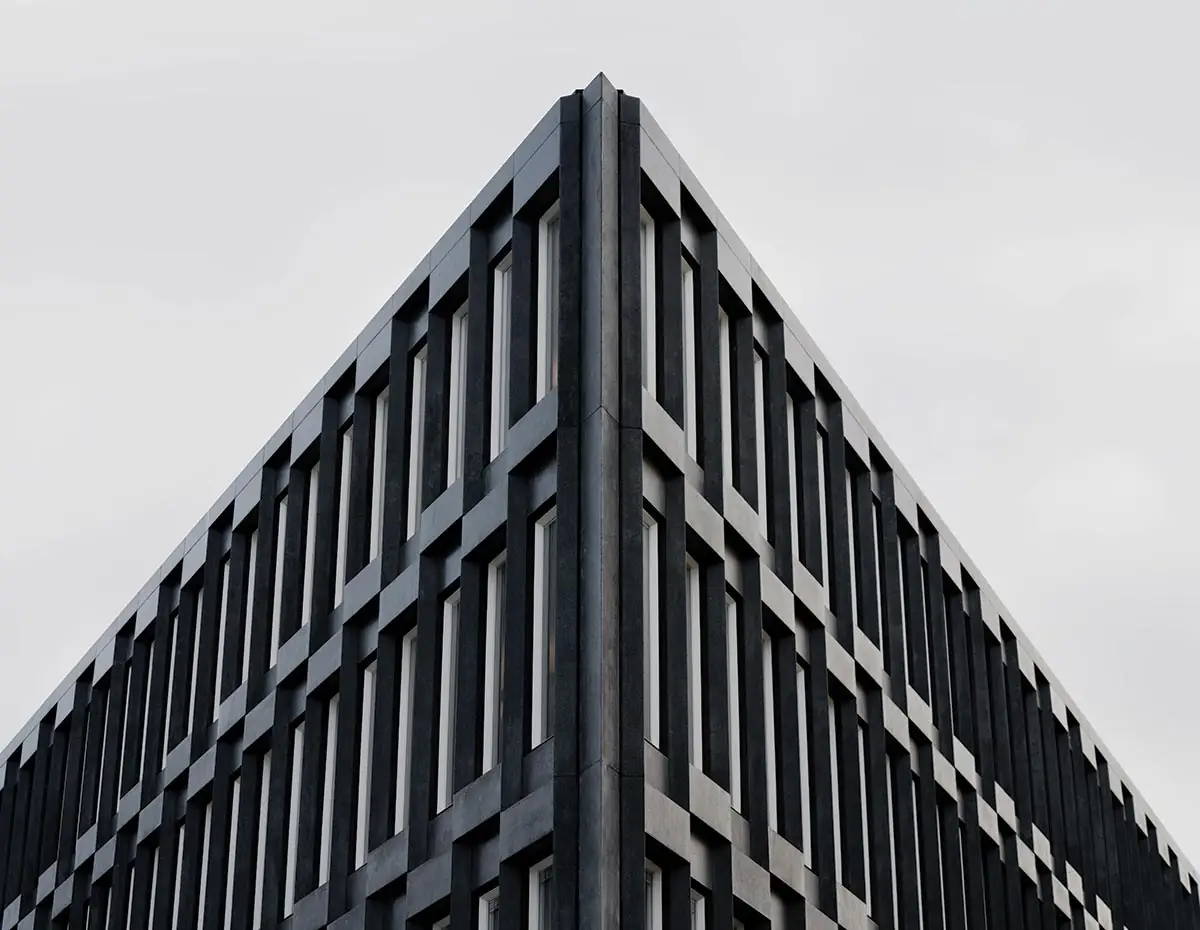
The building’s extremities terminate at sharp, blade-like corners. Photo © Einar Aslaksen
Located in a country that has a 122-mile border with Russia, the Oslo embassy, which opened in 1959, was one of two designed by Eero Saarinen—the other being London’s, which is currently undergoing conversion into a hotel by David Chipperfield Architects (due to complete in 2025). Set back from the limits of its triangular site, the Oslo chancery presents three almost identical four-story facades in precast-concrete modules that, thanks to large amounts of labradorite aggregate, appeared black when first unveiled. Partly load-bearing, the elevations created a strikingly graphic effect as the light caught their facets, emphasizing the contrast between the dark concrete and the white-painted window frames—for Saarinen, the building was to embody the strict elegance of a gentleman in evening attire. As stipulated by the State Department, it had three principal entrances: at its eastern extremity, that to the library and auditorium; at its western tip, that to the consulate; while, in the middle of the northern facade, opposite the palace, stood the doors to the embassy proper, signaled on the street by a steel-and-concrete flagpole-canopy designed by César Pelli, then a young staffer at Saarinen & Associates.
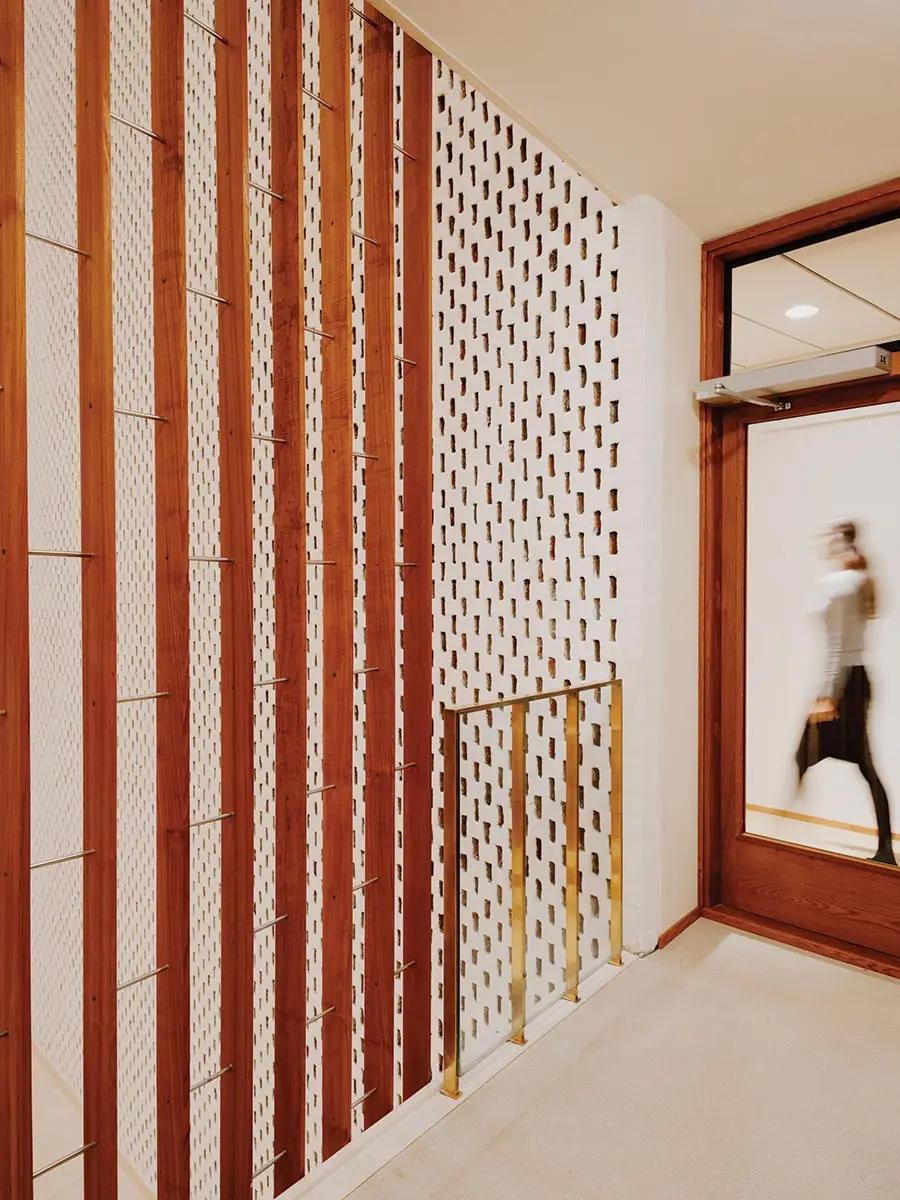
1
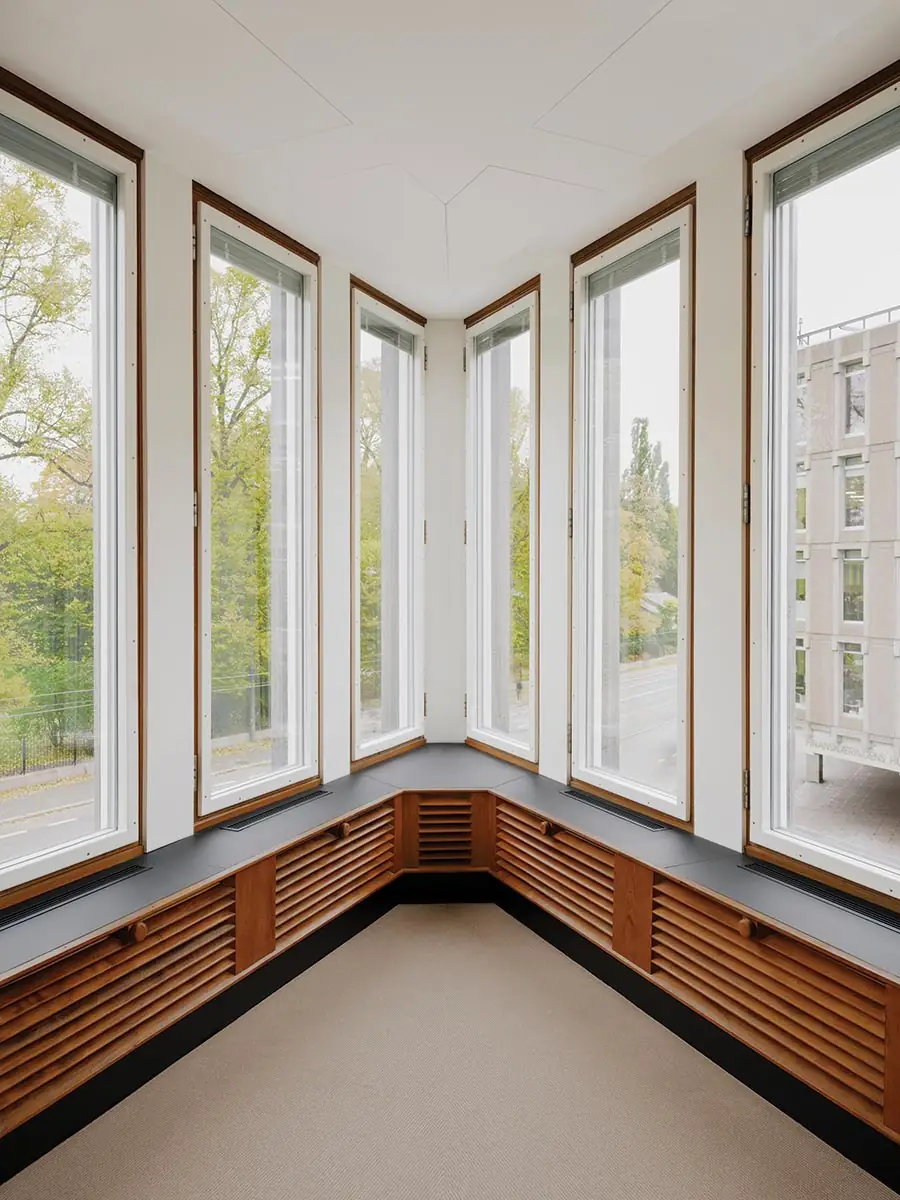
2
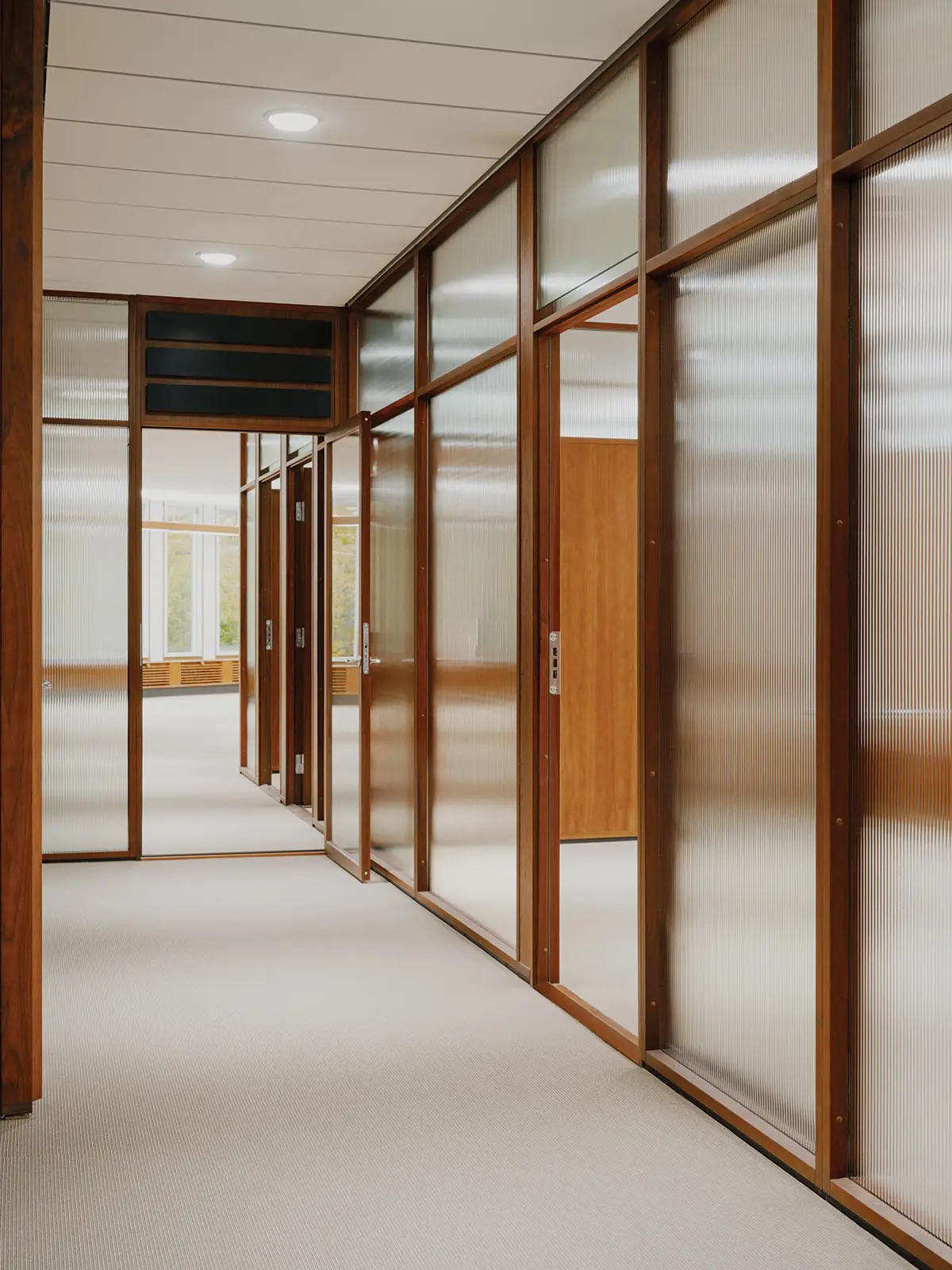
3
The atrium features teak (1), while offices include walnut (2 & 3). Photo © Einar Aslaksen
After climbing the shallow flight of stairs in the embassy entrance, which was guarded by a desk-seated marine, staff arrived in a square, top-lit atrium with a pool and a faceted ceiling. Saarinen clad two sides of the atrium in wide-spaced white-painted brick, and placed open walkways behind a screen of teak slats on the others. Offices, furnished by Knoll, were lined up along all three facades, with fire escapes and bathrooms tucked away in the two triangular spaces between the atrium and the office corridors. The library occupied the whole of the second floor along the northern facade, the auditorium and staff restaurant were located in the semi-basement (due to the site’s slope, it becomes the ground floor at the rear); and mechanical equipment was hidden away on the roof in a setback story.
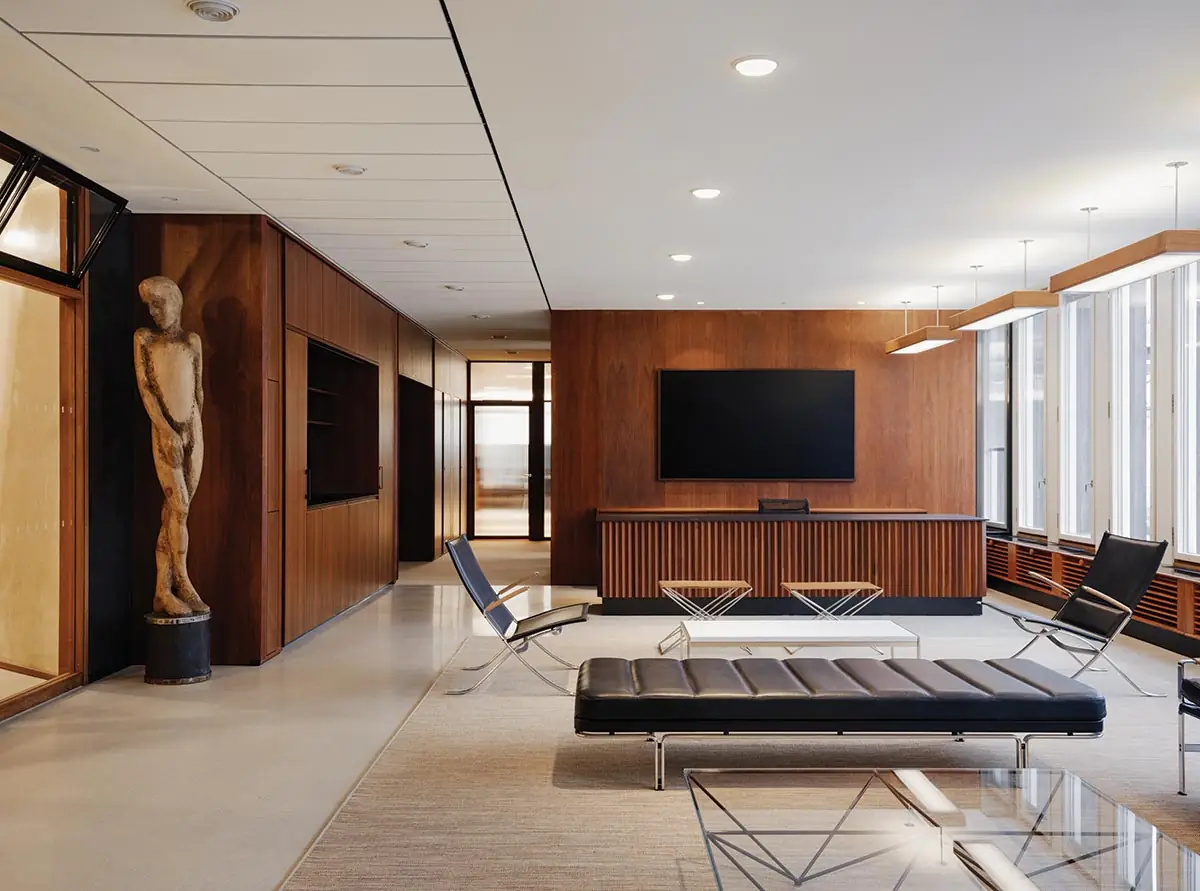
Daylight floods the offices, which line the building’s perimeter. Photo © Einar Aslaksen
“When the client bought the building, he didn’t know who Saarinen was or even that it was by a famous architect,” laughs Jonas Norsted of Norwegian office Atelier Oslo, which was one member of the team—alongside fellow Norwegians Lundhagem and conservation architects Erik Langdalen and Otero-Pailos—that won the 2017 competition to convert the building for Fredensborg’s billionaire founder Ivar Tollefsen. Looking to move the firm’s headquarters there, Tollefsen was soon checked by the Norwegian authorities who, following a reconnaissance tour carried out while the building was still U.S. territory, immediately landmarked the embassy once the sale went through. Since much of the chancery was off-limits during the visit, the heritage commission listed only what it had actually seen: the facades, the entrances and atrium, the whole of the second floor where the library was located, the auditorium, and the fourth-floor ambassador’s office.
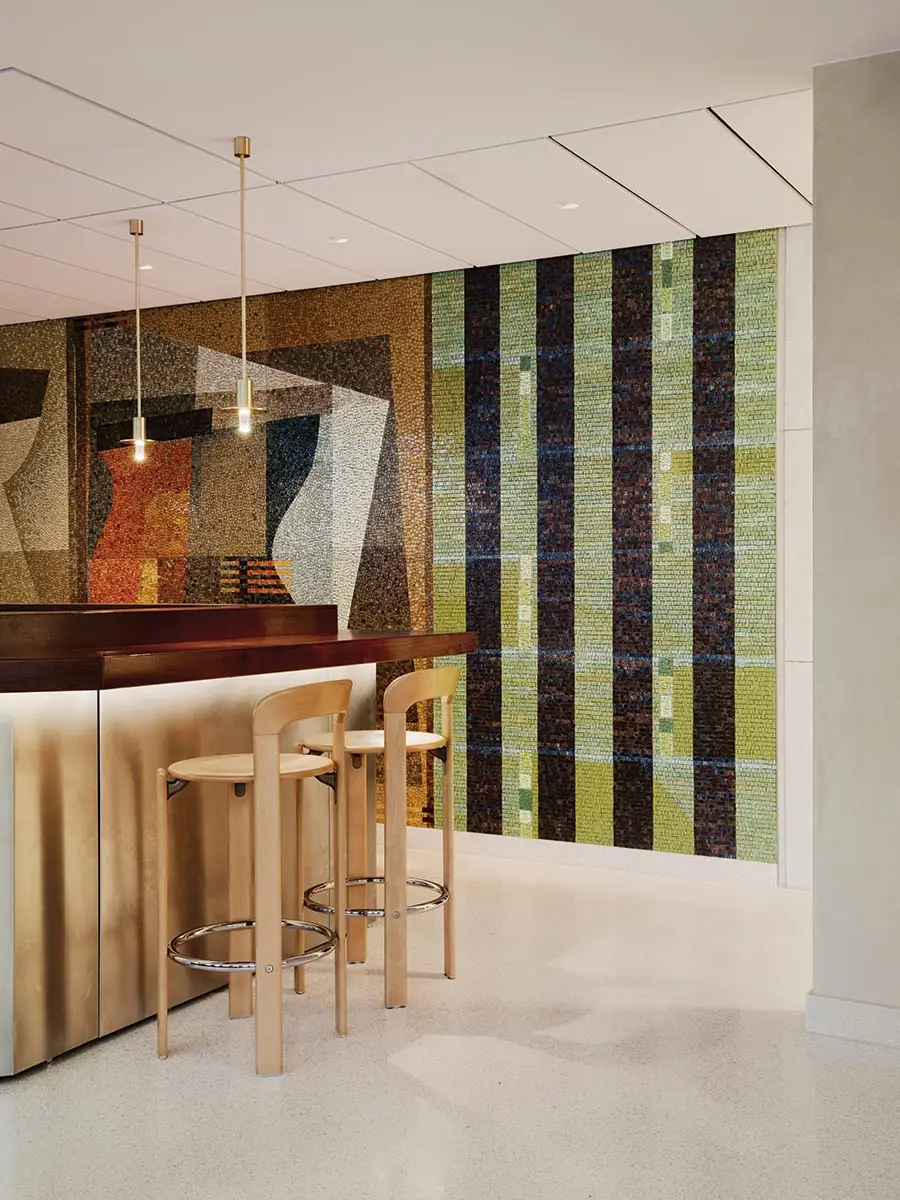
Contemporary mosaicwork by Diena Georgetti complements the midcentury architecture. Photo © Einar Aslaksen
“The main question in the competition brief was, ‘How much extra space is possible?’” continues Norsted, whose team proposed adding floors both on top of and underneath the building. Hostile to any extension, the heritage commission vetoed building upward, which would have altered Saarinen’s proportions, but gave way on digging down when it became clear that it was the only way of squeezing in today’s voluminous HVAC systems. As a result, the most radical intervention is invisible from outside: the entire plot has been excavated to a depth of 50 feet, a nerve-racking process that took 18 months, since the ground consisted of solid rock that had to be drilled and dynamited away while the building was propped on temporary stays (today replaced by a permanent structure in steel). As well as the mechanical equipment, the new basement contains a large events space (with its own entrance in the sidewalk at the rear), a gym, and a parking garage, while the former auditorium and staff restaurant now house a brasserie. Another restaurant crowns the building—the erstwhile technical floor has been rebuilt to take advantage of views over the palace and Oslo’s harbor—and a café can be found where consular services were once located.
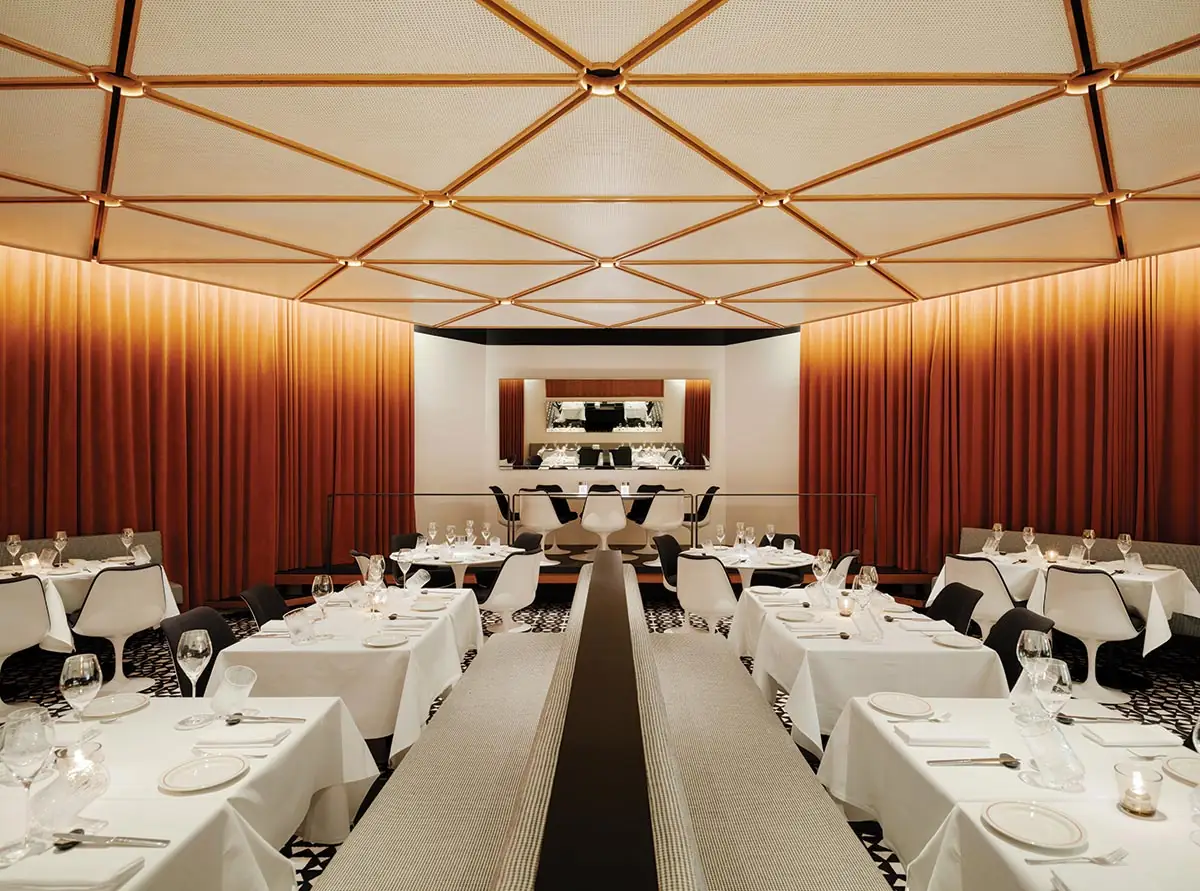
Saarinen-designed Tulip chairs furnish the restaurant. Photo © Einar Aslaksen
While both the landmarked ambassador’s office and second floor have been meticulously restored, including repair of the library’s clever shelving system, the remainder of the standard office floors was gutted to make way for more state-of-the-art accommodation—though the result, with its walnut-and-glass partitions, appears more Mad Men than the originals. The imperative to respect the building’s volumes made installation of mechanical ventilation extremely challenging, leading the architects to develop an ingenious approach that, in addition to small-diameter ducts and porous dropped ceilings, uses the atrium as a chimney to extract stale air. Another challenge was presented by the building’s facades, which had faded to a dull gray-brown and were badly deteriorated in places. “The manufacturer that cast the modules used salt in the mix because it helped the concrete set faster,” explains Langdalen. “But in the long run, that proved disastrous, because the salt corroded the rebar, leading to spalling.” Three years were required to scrape out, treat, and patch the losses, after which 3 millimeters (approximately 0.1 inch) were shaved off the surfaces of the entire facade to bring back its initial anthracite sheen.
“People ask, ‘What have you been doing?’ because it looks as though we haven’t done anything here at all,” jokes Norsted about the conversion, which reportedly cost more than double the $44 million purchase price. The approach in Oslo is very different from that in London, where Saarinen’s chancery has not only been gutted but sports a tall new upper story. In the preservation world, however, “What have you been doing?” is about the highest compliment there is.
Before renovation, the architects created a photogrammetric model of the embassy building (below). Click and drag the graphic to rotate in 3D.
Click plan to enlarge
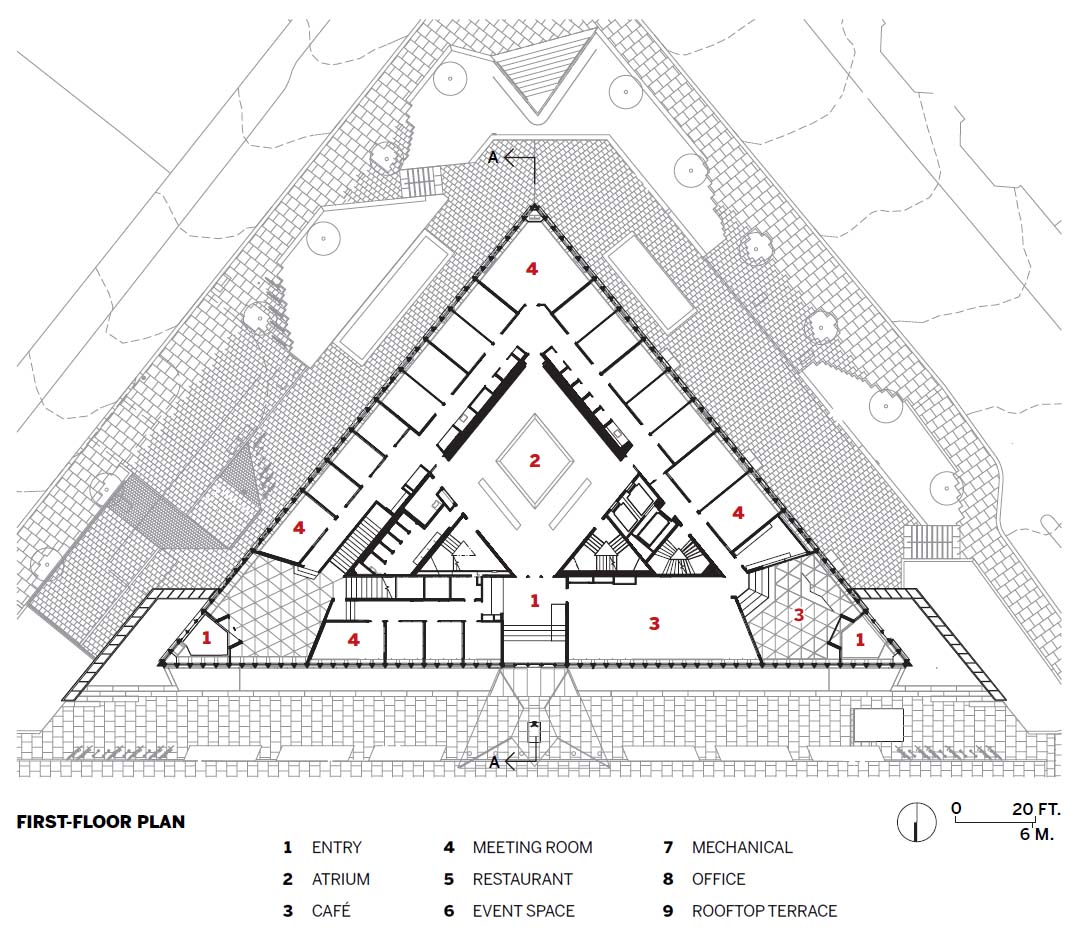
Click section to enlarge
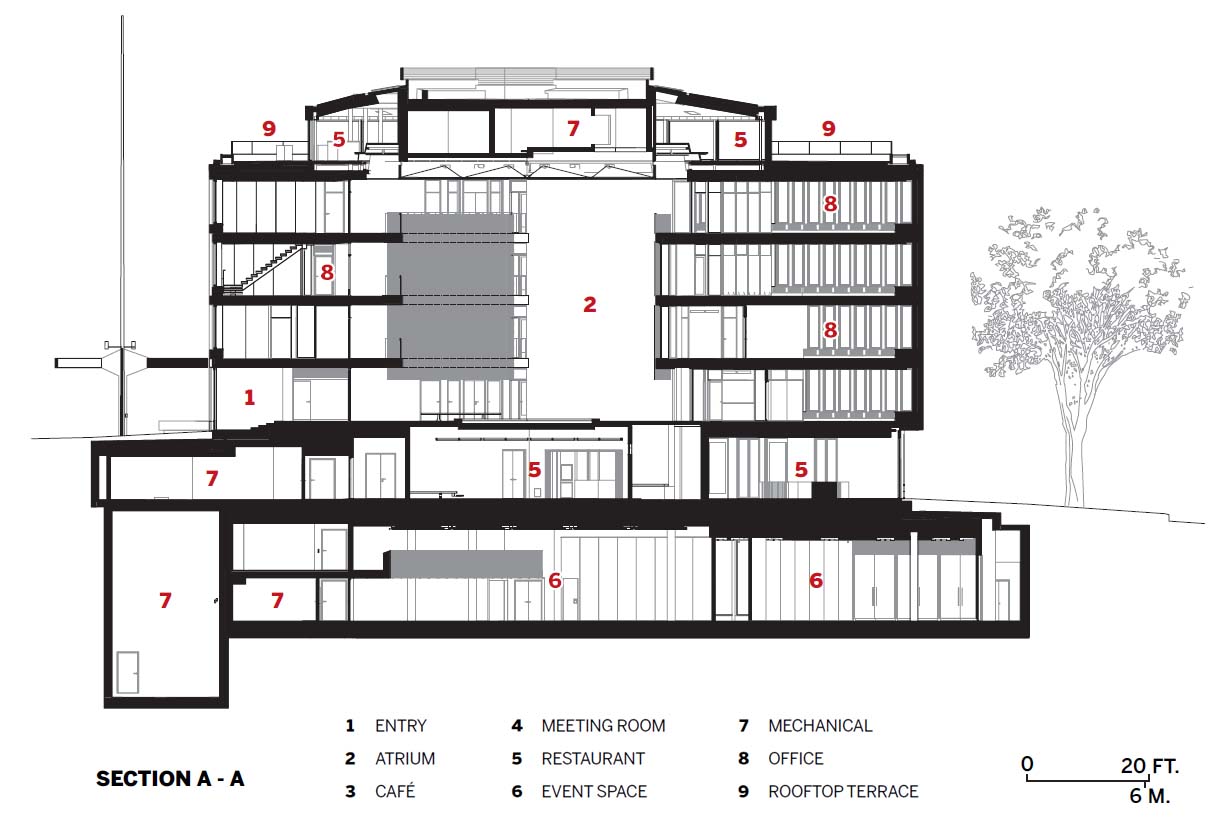
Credits
Architects:
Eero Saarinen (original); Atelier Oslo & Lundhagem — Jonas Norsted (Atelier Oslo), Svein Lund (Lundhagem), partners in charge; Bosheng Gan (Atelier Oslo), Ane Forfang (Lundhagem), architects in charge; Ola Høgmoen, Heiki Fretheim, Patrick Larsson, Tomas Rønhovde, Anna Sommarstøm, Erlend Eidsaa, Ellen Sjong, Sofie Skoug, Mesi Koponen, project architects
Engineer:
Bollinger + Grohmann
Consultants:
Erik Langdalen + Jorge Otero Pailos (preservation); Paulsen & Nilsen (interior design); LCLA Office, SLA (landscape architecture); Fokus Rådgiving (pm/fp); Foyn Consult (electrical); Norconsult (building physics); Link Arkitektur AS (ventilation); Golder Associates (geotechnical)
General Contractor:
Oslo Byggentreprenør
Client:
Fredensborg AS
Size:
101,200 square feet
Cost:
Withheld
Completion Date:
November 2023









